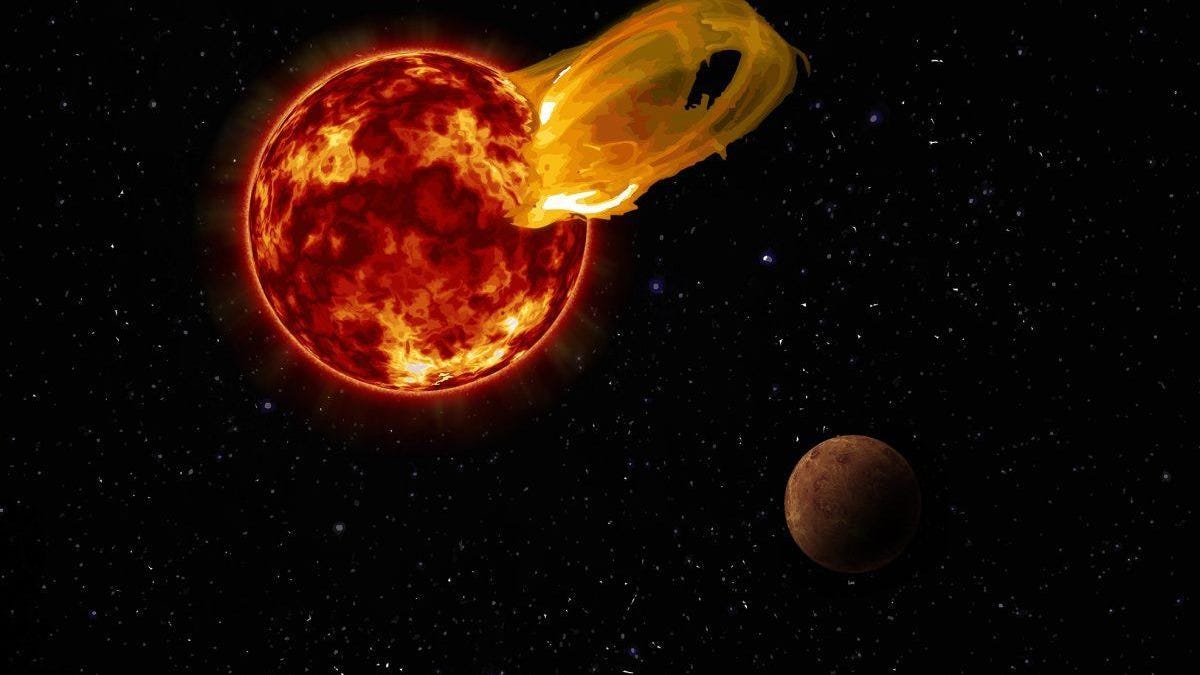Any aliens on exoplanet Proxima b likely wiped out last year
Astronomers caught the star Proxima Centauri unleashing a massive flare that raises serious doubts about life on its lone confirmed orbiting planet.

An artist's concept of Proxima Centauri unleashing a huge flare.
The chances that the nearest planet beyond our solar system might be habitable and perhaps even host quirky, telepathic aliens have dimmed significantly thanks to one day last year when the star Proxima Centauri shone exceptionally bright.
Astronomers observed a huge solar flare from the star just four light-years away that increased its brightness a thousandfold for about 10 seconds and probably showered nearby planet Proxima b with energetic particles.
The findings were published Monday in The Astrophysical Journal Letters.
"March 24, 2017, was no ordinary day for Proxima Cen," said Meredith MacGregor, an astronomer at the Carnegie Institution for Science, in a statement. "It's likely that Proxima b was blasted by high-energy radiation during this flare."
That's bad news for the prospects of life there. Any intelligent beings would have basically experienced the horrible ending of the 2009 Nicolas Cage science fiction flick "Knowing."
It was already known the dwarf star was prone to outbursts of smaller, X-ray flares. But if Proxima b has also been on the receiving end of major flares like the one MacGregor and her colleagues caught with Chile's Atacama Large Millimeter/submillimeter Array (ALMA), it's not going to be worth planning a vacation there any century soon.
"Over the billions of years since Proxima b formed, flares like this one could have evaporated any atmosphere or ocean and sterilized the surface," she said.
There is hope for the future habitability of Proxima b, though. Eventually, Proxima Centauri will calm down and begin to cool into a white dwarf that might be far more hospitable.
Unfortunately, that's unlikely to happen for at least another 4 trillion years, or roughly 300 times the current age of the universe. Stubborn old star.
Crowd Control: A crowdsourced science fiction novel written by CNET readers.
Solving for XX: The tech industry seeks to overcome outdated ideas about "women in tech."

